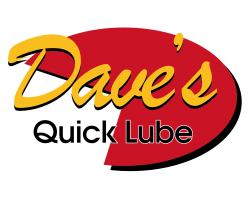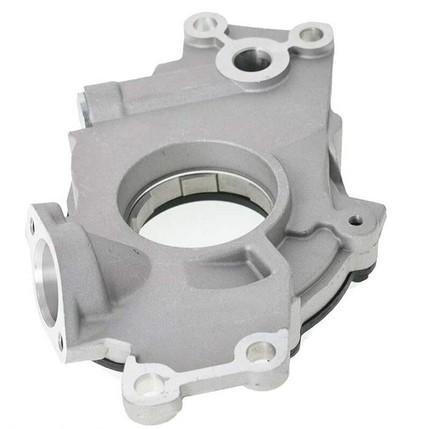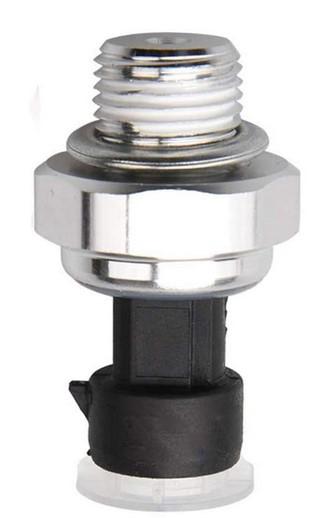The faulty oil pressure sensor in the chevy 6.0 engine has been an issue for a long time. With that said, vehicles with the most pressure switch concerns are V-8 engines built between 2003 and 2012. Chevrolet realized there was a problem in 2007, although it wasn’t revealed until sometime after then.
When it comes to replacing an oil pressure sensor, many people choose not to go through the trouble of removing the old one. They used a filter screen to surround the chevy 6.0 oil pressure sensor in order to eliminate any sludge or debris. This made matters worse by exacerbating them. When you pull away the protective screen, you may discover it clogged on occasion.

If you replace the oil pressure sensor but do not change the filter screen around it because you believe it is faulty and do not replace the filter screen, the same problem reoccurs. Because the component is not simple to replace, you want to ensure that everything goes smoothly from beginning to end. Unfortunately, most people simply read the first paragraph of these articles and replace whatever is stated in that section.
Not only will we give suggestions on how to fix this unreliable Chevy 6.0 oil pressure sensor, but we’ll also discuss a number of the difficulties connected with this repair as well as typical computer and sensor faults. Finally, we include images of where the component is located so you can see for yourself.
Chevy 6.0 Oil Pressure Importance
Oil pressure is a crucial element of a functioning engine that lasts a long time. Engines are complicated devices with a significant amount of weight to draw – literally. Oil in an engine ensures that all moving parts are well lubricated and able to function properly.
When the oil is being circulated throughout an engine, pressures build up. It’s this pressure that ensures the oil reaches all of the places it needs to and keeps flowing.
If the pressure drops below that required for oil to freely flow around all moving parts of the engine, non-lubricated metal surfaces will come into touch.
Water in the cooling system cannot be absorbed by conventional antifreeze, so it ends up in places where it shouldn’t be: in the engine and its components. Water causes corrosion, which loosens and destroys seals. It also causes friction, warping, seals breaking, and other issues. Water in an automobile’s cooling system is a quick way to damage its engine. If left unchecked, problems with oil can really cause significant damage to your car.
So, it’s critical to keep an eye on your oil pressure gauge and do regular maintenance. If the warning light comes on to warn you of a problem with the pressure, as soon as possible, come to a stop in your car.
Symptoms of Chevy 6.0 Oil Pressure Problems
The first time we encountered the Chevy engine oil pressure issue, an oil gauge that read zero and a check engine light. Obviously, because there was no noise, the motor was obtaining oil pressure.
We discovered a code P0521 and a trouble code P0523 when we connected the scan tool. These codes indicate that the engine oil pressure sensor switch is out of range, as well as a sensor high-voltage. It’s also typical to come across a P0520, which signifies an oil pressure sensor circuit malfunction, and a P0522, which indicates a low voltage condition in the circuit.
One final thing to note is that the dash display noticed there was a problem with the oil. You should always follow the directions since in case of emergency it might be useful. The diagnostic procedure for this problem is the same as it has always been. Connect a mechanical gauge to discover what’s wrong with the automobile if you remove the oil pressure sensor or switch. You’re reading the mechanical engine oil pump pressure, not relying on electronics that report this value.
The majority of individuals do not own a mechanical oil pressure gauge. If your Chevrolet V-8 engine was built between 2003 and 2012, you can safely skip the standard procedure and avoid wasting time and money on attempting to troubleshoot this issue for months.
Replacing the Chevy 6.0 Oil Pressure Sender
The oil pressure sender’s position is a problem for most do-it-yourself mechanics. It’s a tight squeeze, as you can see from the photo. It’s in front of the transmission bell housing, where it bolts to the engine.
But, in this situation, we suggest using the correct tool for removing the pressure switch. The narrow wall of the specialized socket makes it simple to slide over the sensor.
A conventional 1 1/16th deep socket would not be tight enough on the factory-installed component. The 27 mm deep impact socket was too thick to fit over the sensor, and the standard 1 1/16th deep socket wouldn’t fit tight enough. If you own this vehicle long enough, you’ll probably get to use the unique tool a few more times. Sensor failures are typical, and we’ll address this in the issues section below.
The first step, after removing the plastic cover over the engine, is to remove the front panel. Surprisingly, even this is a struggle. The top of the cover simply swings off of two anchor points in the front. However, because there isn’t enough space above it, it gets hooked on the rear retaining clips.
To remove the engine cover, you’ll need to spread it wide and then reach in and push down on the rear retainer while lifting up on the backside of the engine cover. The final stage is to remove the electrical connection. A lock tab keeps it in place. Simply pull up the white lock tab to release it. Then twist off the connector lock and remove it from the sensor.
The sensor bolts into a hole in the engine block’s rear section, which is referred to as an oil gallery. Removing the Chevrolet engine oil pressure sending unit with a six-inch extension coupled to a swivel head 3/8 ratchet was very simple. Here’s a three-minute movie that explains things simply.
Problems when Replacing Chevy 6.0 Oil Pressure Sensor
The most common reason for a malfunctioning oil pressure sensor is repeat failure. This has to do with the source of the problem. Sludge and debris get into the old oil pressure switch due to sludge and grime building up inside it.
The 2007 model year marked the introduction of a filter screen, which Chevrolet implemented to prevent this. Now the screen gets clogged with debris, preventing oil from reaching the sensor.
As a result, individuals who just replace the replacement part without replacing the screen are disappointed because the repairs don’t last long or are ineffective. This also leads to uncertainty that there is something additional wrong with the vehicle.
A lack of engine maintenance is frequently the reason for older Chevy engines’ failures. This isn’t always the fault of the present owner; it’s due to carelessness on the part of the prior owner. A scarcity of oil changes might induce sludge deposits.
The cable from the old pressure sensor may be disconnected and wind up in the replacement pressure sensor’s input port. If you have one, replace both the screen and switch.
A tiny pick will be required to fish it out of the oil gallery in the engine block. The new screen is held in position by the sensor as you thread it in. It doesn’t appear to be a good idea to clean the old screen since the replacement part is so inexpensive. In the following section, we’ll go through some additional concerns that We’ve had while attempting to save money on this repair.
Replacement Chevy 6.0 Oil Pressure Sending Units
When it comes to automobile components, the aftermarket typically steps in to provide cheaper alternatives. They begin producing large quantities of substitute parts and selling them at a lower cost.
Unfortunately, We’ve seen some problems with these ultra-low-cost replacement Chevrolet engine oil pressure sensors. A few of them didn’t work as advertised right out of the box. And this isn’t due to any of the issues discussed above in the repeat failure category.
However, in the worst-case scenario that we encountered, let me tell you about it. A catastrophe occurred when we started the engine after replacing the oil pressure sending unit with a part that cost $15.
The center of the part blew out, and it became unusable. Because the oil pressure gallery is now open to the air,
In this particular situation, the oil change itself took a few more hours to complete due to the car and work area cleanup. As a result, if a customer asks me to replace the Chevy engine oil pressure sending unit we utilize only Delco parts. However, I won’t get it from the dealership because it’ll cost almost $100. When it comes to dealerships, while on this topic, we had sticker shock when pricing this job.
The oil sending unit in my area cost $500 to replace, according to the local Chevy dealership. Because you can save so much money by doing it yourself, you may invest in a high-quality replacement part as well as a new screen and the required tool to make changing it easier while also saving money.
What is the function of the oil pump?
On most cars, engine oil is kept in the engine oil pan, and many high-performance vehicles have external oil reservoirs. The oil pump is in charge of pumping oil into the engine faster than the engine can consume it. A consistent pressure is generated as a result of this process, which leads to friction. Oil is rapidly transported through these tiny channels to the locations that need protection. Oil isn’t really a lubricant since it prevents metal contact between internal engine components. When the barrier becomes less effective, metal contact will occur at an accelerated rate in comparison to oil pressure degradation. Oil pressure is what keeps the oil from leaking out once it has been established. Oil pressure drives oil into all of the tight places as quickly as possible, keeping them lubricated. When the oil pump fails, engine components will run out of oil and suffer damage.





